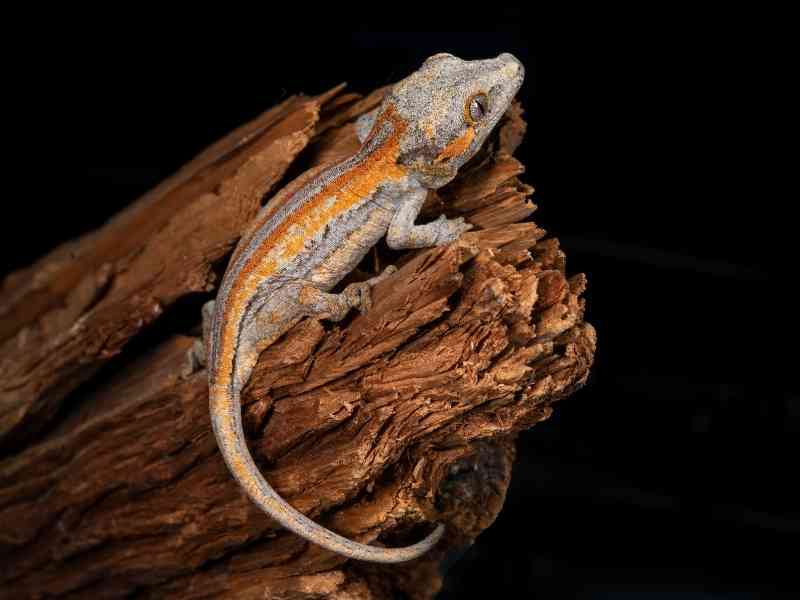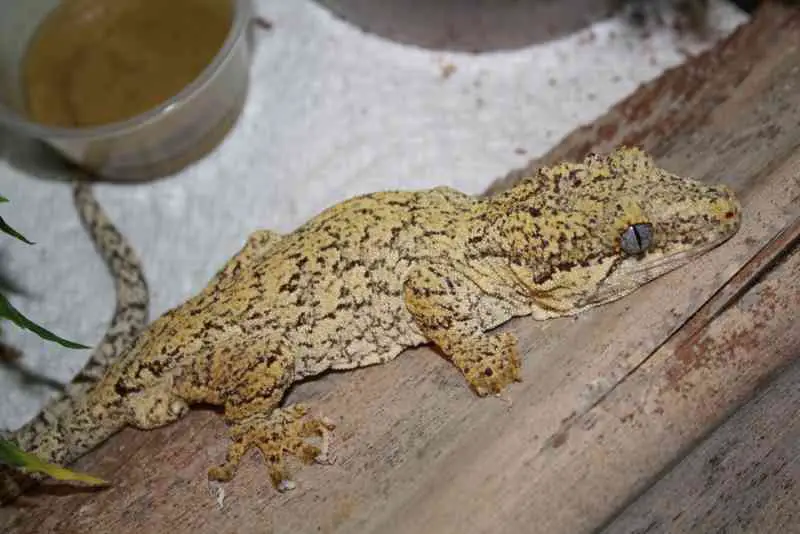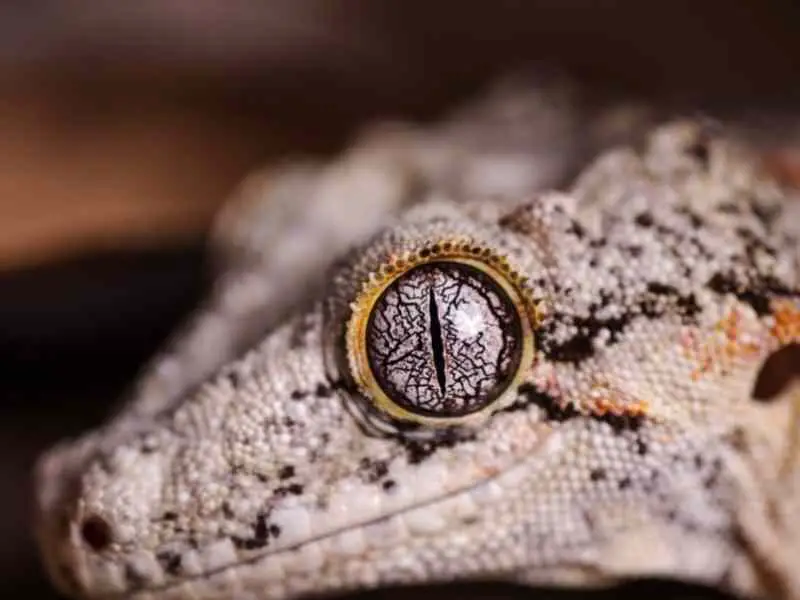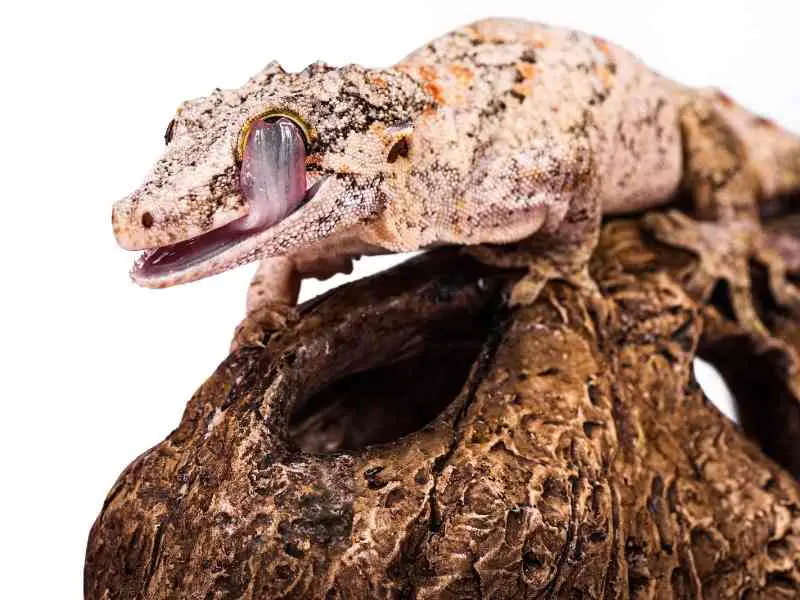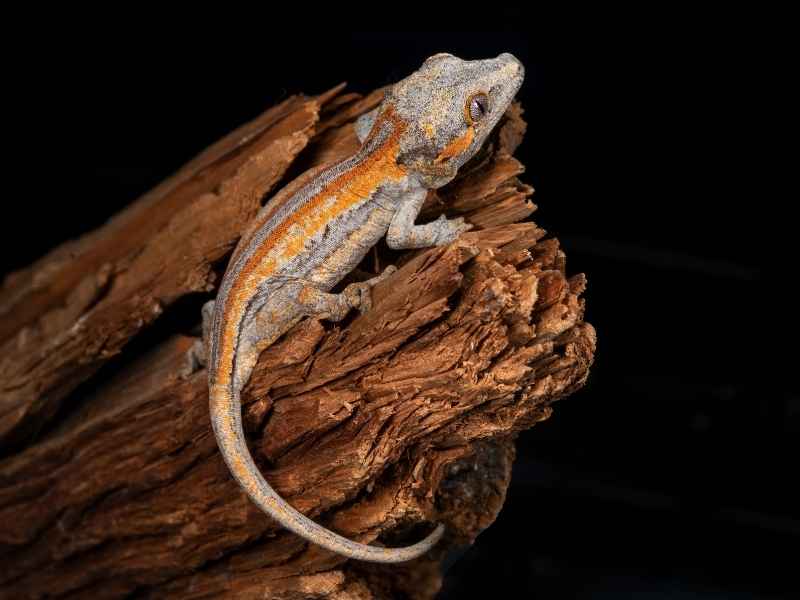Gargoyle Gecko Turning White and Shedding (How to Help)
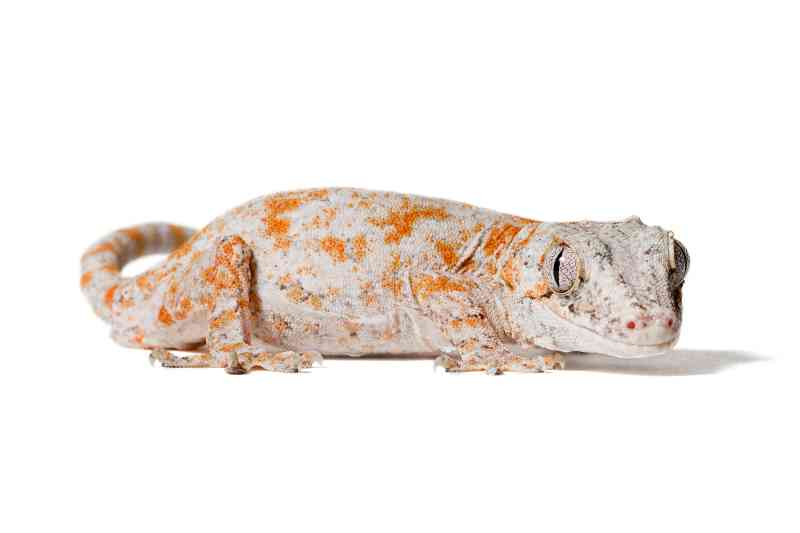
Many geckos, including gargoyle geckos, tend to change their color due to various reasons. Similarly, if you notice your gargoyle gecko turning white, there is a reason for it.
Gargoyle geckos turn white or pale when they’re about to shed. It is a natural process, and there is no need to worry as they will go back to their original color a few days after shedding.
Let’s elaborate more on why gargoyle geckos turn white.
Contents
Why Do Gargoyle Geckos Turn White?
Gargoyle geckos mainly turn pale and white due to one reason – they’re about to shed.
Gargoyle geckos need to shed their skin to develop and make room for the new one. During this time, they go through several behavioral and emotional changes. So, their skin turns white and pale too.
A gargoyle gecko’s skin turns white or pale before shedding because the nutrients and water from the old skin are absorbed by its body. Furthermore, a lymph fluid layer gets collected between the old skin and the new skin causing a pale or white appearance.
Note: A few owners have found that their gargoyle geckos turn pale or white when they’re relaxed. So, if it isn’t your gecko’s shedding time, and it’s turning white or pale while sleeping, then this could be the reason.
What Are the White Spots on My Gargoyle Gecko?
White spots on your gargoyle gecko are typically due to shedding again. Your gecko might develop white spots when they’re about to shed.
However, you should also check your gargoyle gecko for fungal or bacterial infection if it isn’t its shedding time. Fungal and bacterial infections often cause blisters on the gecko’s skin, which may look like white spots.
Quick Tip: White spots due to shedding don’t have a blister-like appearance. But, if they’re due to a skin infection, they might be blisters filled with fluids.
Should I Be Concerned About My Gargoyle Gecko Turning White?
You don’t need to be concerned about your gargoyle gecko turning white or pale if it sheds regularly.
As mentioned earlier, shedding is the main reason for a gecko appearing white. So, as soon as your gargoyle gecko has shed its old skin and developed a new one, it should return back to its original color.
However, it is a cause of concern if your gargoyle gecko is turning pale but not shedding. This could be because of the following reasons:
- Improper temperature and humidity
- Improper diet
- Stress
- Other illness
Hence, you need to find out the main cause and find a desirable solution for it.
Should I Help My Gargoyle Gecko Shed?
Gargoyle geckos can shed themselves easily if they have the right diet and environment. However, if they cannot shed for some reason, you shouldn’t pull their shed by yourself as it can hurt your gecko’s delicate skin underneath the shed.
Yet, there are a few ways to assist your gecko in shedding its skin easily. The table below demonstrates the best ways.
| Method | What to Do |
| Bathing | It can help in softening and removing any stuck shed in gargoyle geckos. Take a small container and make some holes in the lid. Next, use room temperature water to fill the container. Ensure that the water doesn’t exceed the gecko’s toes. Keep the gecko inside the container, and close the lid. Let your gecko relax in it for 15 minutes. Finally, take your gecko out and allow them to shed. |
| Misting | It can soften the gecko’s shed. However, ensure that you never spray the gecko’s face directly. Instead, fill lukewarm water in the hand sprayer. Next, spray the gecko’s body. Then, pat them dry after 15 to 30 minutes. You should mist your gargoyle gecko only once a week while it’s their shed time. |
| Shedding Aid | A shedding aid consists of water, vitamin E, aloe, and jojoba oil. Fill the shedding aid in a hand sprayer, and spray it on your gecko’s body. A better alternative is to use a Q-tip, dip it in the shedding aid, and rub it gently on the gecko’s skin. This allows better absorption. |
| Placing Rough Surfaces | If there aren’t sufficient rough surfaces for your gargoyle gecko, it may have difficulty in shedding. So, try to place more rough surfaces, like branches or rocks, in your gecko’s tank. |
Does It Hurt Gargoyle Gecko to Shed?
Typically, gargoyle geckos don’t hurt while shedding. However, keep in mind that their skin becomes highly sensitive to any sort of touch. So, it may hurt them and make them extremely irritable, if you touch their skin or something else touches it.
Moreover, sometimes, your gecko might hurt if the shed is stuck. A stuck shed can cause pain to your gecko, as your pet may feel like it’s continuously tugging on its skin. Additionally, it may try too hard by rubbing on rough surfaces to remove its shed. This may lead to increased pain while shedding.
In the worst-case scenario, a gargoyle gecko may lose its limbs and toes due to loss of blood circulation, if the shed is stuck there.
Can I Still Hold My Gargoyle Gecko?
When a gargoyle gecko is shedding, you should give them full space, and not hold them. There are two major reasons for it:
Your Gecko Might Be Irritated or Lethargic
Shedding leads to emotional changes in most geckos, including gargoyle geckos. So, their emotions, including stress and irritation, are more heightened during this particular time.
If you try to invade your gecko’s space when it’s shedding, it may get irritated at you. Instead, give full space, and allow it to shed peacefully.
Your Gecko Might Get Hurt Severely
As mentioned above, gargoyle geckos have very sensitive skin during the shedding period.
Therefore, if you accidentally peel off the skin while holding them, it is going to hurt them. Moreover, it may also lead to a stuck shed which can cause further complications.
So, it is best to hold your gargoyle gecko a few days (around 4 to 5 days) after it’s done shedding.
